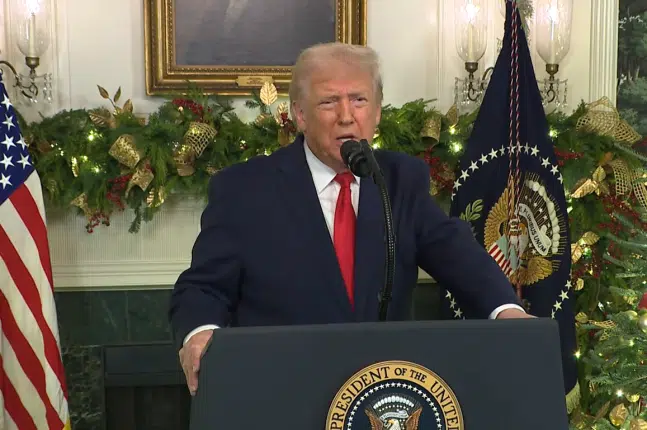After criticisms from both sides have come out on the budget deal that was reached last Friday night that averted a government shutdown, Speaker Boehner released a document today that seeks to put the facts out on the deal that he reached with Harry Reid and Obama.
From Speaker Boehner:
MYTH VS. FACT: THE BIPARTISAN AGREEMENT TO CUT SPENDING TO SUPPORT JOB CREATION
MYTH: “Most of the cuts in the agreement aren’t real cuts. Many are cuts that were already scheduled to happen, and were proposed in the president’s budget.”
The spending cuts in the legislation are real cuts that help to clear a path for Chairman Paul Ryan’s landmark Path to Prosperity budget. The agreement includes a gross spending cut of nearly $45 billion — a net spending cut of nearly $40 billion, as a result of the $5 billion increase for the Defense Department that Speaker Boehner fought for and won. Democrats accurately note that some of the spending cuts in the agreement were proposed in the president’s budget, but disingenuously fail to note that many of those cuts were used in the president’s budget to offset additional or new spending elsewhere. In the context of the agreement, those cuts are now real cuts – chopping billions of dollars off the baseline, rather than being used to offset other Washington spending sought by the administration. As Chairman Ryan said Tuesday, the agreement “[secures] tens of billions of dollars in spending cuts, forcing the President and his party’s leaders to retreat from their reckless spending spree. The historic spending cut turns the page from Washington’s pervasive culture of spending, sending a welcome signal to job creators and cleaning up the unprecedented budget mess left by the last Congress.”
MYTH: “President Obama got most of what he wanted.”
The agreement is imperfect, but it’s hardly a “win” for President Obama or the Democratic Party agenda of bigger government and increased spending. As a result of the agreement, the federal government will spend $78.5 billion less than President Obama proposed spending this year. The agreement eliminates one Obamacare program, cuts a second nearly in half, and eliminates four of the Obama Administration’s controversial “czars” – including the president’s health czar charged with overseeing his government takeover of health care, his auto czar responsible for managing the federal government’s takeover of U.S. auto manufacturers, and his climate change czar tasked with implementing the president’s job-crushing national energy tax. The agreement secures Senate votes and debate on de-funding of two presidential priorities – Obamacare and Planned Parenthood – while saving the successful D.C. school choice program Democrats have been trying to eliminate for years.
MYTH: “The cuts in the agreement will have no impact on the long-term trajectory of government spending.”
The agreement will chop an estimated $315 billion out of the federal budget over the next 10 years, setting the table for Chairman Paul Ryan’s Path to Prosperity budget, which cuts trillions. The notion that cuts in mandatory spending are not “real” cuts is a potentially lethal misconception for conservatives to accept. Dramatic reductions in both discretionary and mandatory (“autopilot”) spending are essential to help reduce uncertainty in our economy and create a better environment for job growth, and the agreement makes historic cuts in both types of spending — just months after President Obama and his Democratic allies in Congress called for zero cuts and claimed spending cuts would hurt the economy.
MYTH: “The agreement is just more of the same. It doesn’t really signal any kind of shift in the direction of our government.”
While imperfect, the agreement marks the beginning of a major shift in economic policy – a shift that defined clearly by the GOP budget for which it sets the table, Chairman Ryan’s Path to Prosperity. As late as a few months ago, President Obama was calling for zero spending cuts, clinging to his trademark Keynesian arguments and insisting that spending cuts would hurt the economy. With the agreement, the White House has unceremoniously abandoned that “stimulus” argument. Liberals have slammed President Obama for the agreement, noting it means the White House has, in effect, admitted the “stimulus” spending binge is over. “Princeton University professor Paul Krugman noted that by agreeing to this level of budget cuts, Obama had accepted the premise that the economy has recovered enough to withstand the withdrawal of federal spending. Despite the fragile economic recovery, the economy is still not strong enough, Krugman argued,” according to Politico. And it’s notable that the agreement includes zero earmarks – a stark contrast to two years ago, when President Obama accommodated a Democratic House and Senate and signed into law a massive omnibus spending bill containing an estimated 9,000 earmarks.
MYTH: “The agreement really only cuts about $14 billion in spending. Most of the cuts are from non-discretionary spending, which doesn’t change the baseline.”
Discretionary spending cuts account for more than half of the nearly $45 billion in gross spending cuts that are made in the agreement. As previously noted, the agreement will chop an estimated $315 billion out of the federal budget over the next 10 years, setting the table for Chairman Paul Ryan’s Path to Prosperity budget, which cuts trillions. The notion that cuts in mandatory spending are not “real” cuts is a potentially lethal misconception for anyone to accept. Dramatic reductions in both discretionary and mandatory (“autopilot”) spending are essential to help reduce uncertainty in our economy and create a better environment for job growth, and the agreement makes historic cuts in both types of spending — just months after President Obama and his Democratic allies in Congress called for zero cuts and claimed spending cuts would hurt the economy.
MYTH: “The provisions eliminating President Obama’s ‘czars’ for health care, climate change and other topics are meaningless. The administration has already vacated these posts or scheduled them for elimination.”
The agreement means these posts won’t be coming back — good news for Americans discomforted by the Obama Administration’s agenda of government takeovers and bailouts. And perhaps more importantly, the provisions establish a precedent that Congress can deny the president funding for such positions — effectively challenging their constitutionality.
MYTH: “The agreement is a win for President Obama because it includes a mix of discretionary spending cuts and mandatory spending cuts, rather than just discretionary spending cuts.”
The bill passed by the House in February, H.R. 1, also included mandatory spending cuts. Like H.R. 1, the agreement makes real cuts in discretionary spending and includes no tax increases. After initially opposing any spending cuts, the White House and Congressional Democrats abandoned that position during negotiations and tried to cut their losses by demanding tax increases and trying to prevent virtually any cuts to discretionary spending. Republican negotiators rebuffed this gambit and forced the White House to accept an agreement with a mix of cuts from both discretionary and mandatory spending programs, and zero tax hikes. As noted previously, dramatic reductions in both discretionary and mandatory spending are needed to help reduce uncertainty in our economy and create a better environment for job growth. The agreement makes historic cuts in both types of spending — just months after President Obama and his Democratic allies in Congress called for zero cuts and claimed spending cuts would hurt the economy.
MYTH: “The agreement just nicks a few programs; it doesn’t actually eliminate anything.”
The agreement terminates more than 40 ineffective programs at the U.S. Department of Education alone, including Educational Technology State Grants, Even Start, Advanced Credentialing, Mental Health Integration, Exchanges with Historic Whaling Partners, Women’s Educational Equity, Tech-Prep Education State Grants, Smaller Learning Communities, Legal Assistance Loan Repayment Program, Thurgood Marshall Legal Opportunity Scholarships, and B.J. Stupak Olympic Scholarships. For a full list of federal programs that are cut or eliminated by the agreement, go here. The bill also eliminates the ability of students to draw down two Pell Grant awards at the same time, saving an additional $35 billion over the next 10 years.






